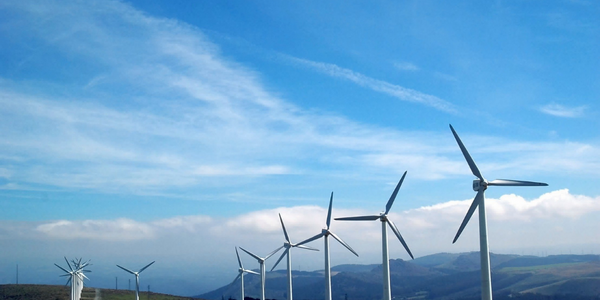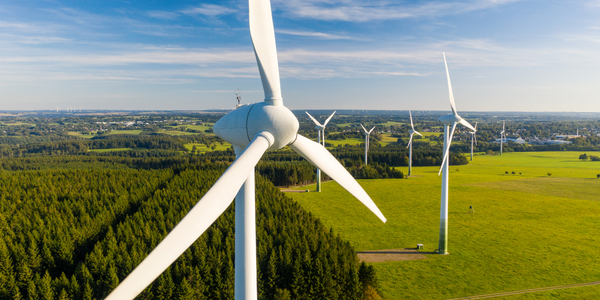Technology Category
- Analytics & Modeling - Digital Twin / Simulation
- Functional Applications - Manufacturing Execution Systems (MES)
Applicable Industries
- Renewable Energy
- Transportation
Applicable Functions
- Logistics & Transportation
- Warehouse & Inventory Management
Use Cases
- Digital Twin
- Manufacturing Process Simulation
Services
- System Integration
About The Customer
The customer is an American multinational renewable energy company with a presence in over 170 countries. The company is committed to delivering reliable green power through blades, hydro, storage, utility-scale solar, and grid solutions. The company was facing significant challenges in managing its supply chain due to an increasing number of complex configurations in its product portfolio and a rapidly expanding customer base. The company's planning processes were disconnected, leading to cost and inventory issues. The company also lacked visibility of constraints and costs from mold capacity planning to installation at customer sites.
The Challenge
The customer, an American multinational renewable energy company with operations in over 170 countries, was grappling with significant supply chain shifts. The company was dealing with an increasing number of complex configurations in its product portfolio and a rapidly expanding customer base. The planning processes for mold capacity planning, blade manufacturing, blade transportation, and blade installation at customer sites were disconnected, leading to cost and inventory issues. The company also lacked visibility of constraints and costs from mold capacity planning to installation at customer sites. Furthermore, due to fragmented business processes and supporting systems, the planning teams were unable to collaborate across multiple functions. The legacy processes and tools resulted in time-consuming planning and reporting efforts by planners, based on snapshots of data. The planning workforce spent the majority of their time number crunching rather than intelligent planning and decision-making.
The Solution
The company adopted o9's platform to address these challenges. The platform provided a digital twin, offering visibility to demand, transportation, blade manufacturing, and mold manufacturing capacities and costs. It also connected all functions and planning processes on a single integrated platform, creating a single source of truth with improved speed and better quality of decision-making. The company no longer needed to manually move data and was able to make decisions and run scenarios based on real-time insights. For instance, the company now has the ability to run fast scenarios on demand upsights and mold-mix changes. The Enterprise Knowledge Graph was used to enable end-to-end planning, including demand, supply, transportation, and IBP. Key capabilities enabled include: what-if scenarios, trade-off evaluation in both units and currency, demand/supply balancing, incremental and interactive planning and a digital twin that provides end-to-end visibility on cost and capacities across the entire network. The system replaced the previous Cognos Planner.
Operational Impact
Quantitative Benefit

Case Study missing?
Start adding your own!
Register with your work email and create a new case study profile for your business.
Related Case Studies.

Case Study
Remote Monitoring & Predictive Maintenance App for a Solar Energy System
The maintenance & tracking of various modules was an overhead for the customer due to the huge labor costs involved. Being an advanced solar solutions provider, they wanted to ensure early detection of issues and provide the best-in-class customer experience. Hence they wanted to automate the whole process.

Case Study
Vestas: Turning Climate into Capital with Big Data
Making wind a reliable source of energy depends greatly on the placement of the wind turbines used to produce electricity. Turbulence is a significant factor as it strains turbine components, making them more likely to fail. Vestas wanted to pinpoint the optimal location for wind turbines to maximize power generation and reduce energy costs.

Case Study
Siemens Wind Power
Wind provides clean, renewable energy. The core concept is simple: wind turbines spin blades to generate power. However, today's systems are anything but simple. Modern wind turbines have blades that sweep a 120 meter circle, cost more than 1 million dollars and generate multiple megawatts of power. Each turbine may include up to 1,000 sensors and actuators – integrating strain gages, bearing monitors and power conditioning technology. The turbine can control blade speed and power generation by altering the blade pitch and power extraction. Controlling the turbine is a sophisticated job requiring many cooperating processors closing high-speed loops and implementing intelligent monitoring and optimization algorithms. But the real challenge is integrating these turbines so that they work together. A wind farm may include hundreds of turbines. They are often installed in difficult-to-access locations at sea. The farm must implement a fundamentally and truly distributed control system. Like all power systems, the goal of the farm is to match generation to load. A farm with hundreds of turbines must optimize that load by balancing the loading and generation across a wide geography. Wind, of course, is dynamic. Almost every picture of a wind farm shows a calm sea and a setting sun. But things get challenging when a storm goes through the wind farm. In a storm, the control system must decide how to take energy out of gusts to generate constant power. It must intelligently balance load across many turbines. And a critical consideration is the loading and potential damage to a half-billion-dollar installed asset. This is no environment for a slow or undependable control system. Reliability and performance are crucial.

Case Study
Airport SCADA Systems Improve Service Levels
Modern airports are one of the busiest environments on Earth and rely on process automation equipment to ensure service operators achieve their KPIs. Increasingly airport SCADA systems are being used to control all aspects of the operation and associated facilities. This is because unplanned system downtime can cost dearly, both in terms of reduced revenues and the associated loss of customer satisfaction due to inevitable travel inconvenience and disruption.

Case Study
Remote Monitoring and Control for a Windmill Generator
As concerns over global warming continue to grow, green technologies are becoming increasingly popular. Wind turbine companies provide an excellent alternative to burning fossil fuels by harnessing kinetic energy from the wind and converting it into electricity. A typical wind farm may include over 80 wind turbines so efficient and reliable networks to manage and control these installations are imperative. Each wind turbine includes a generator and a variety of serial components such as a water cooler, high voltage transformer, ultrasonic wind sensors, yaw gear, blade bearing, pitch cylinder, and hub controller. All of these components are controlled by a PLC and communicate with the ground host. Due to the total integration of these devices into an Ethernet network, one of our customers in the wind turbine industry needed a serial-to-Ethernet solution that can operate reliably for years without interruption.

Case Study
IoT-based Fleet Intelligence Innovation
Speed to market is precious for DRVR, a rapidly growing start-up company. With a business model dependent on reliable mobile data, managers were spending their lives trying to negotiate data roaming deals with mobile network operators in different countries. And, even then, service quality was a constant concern.







